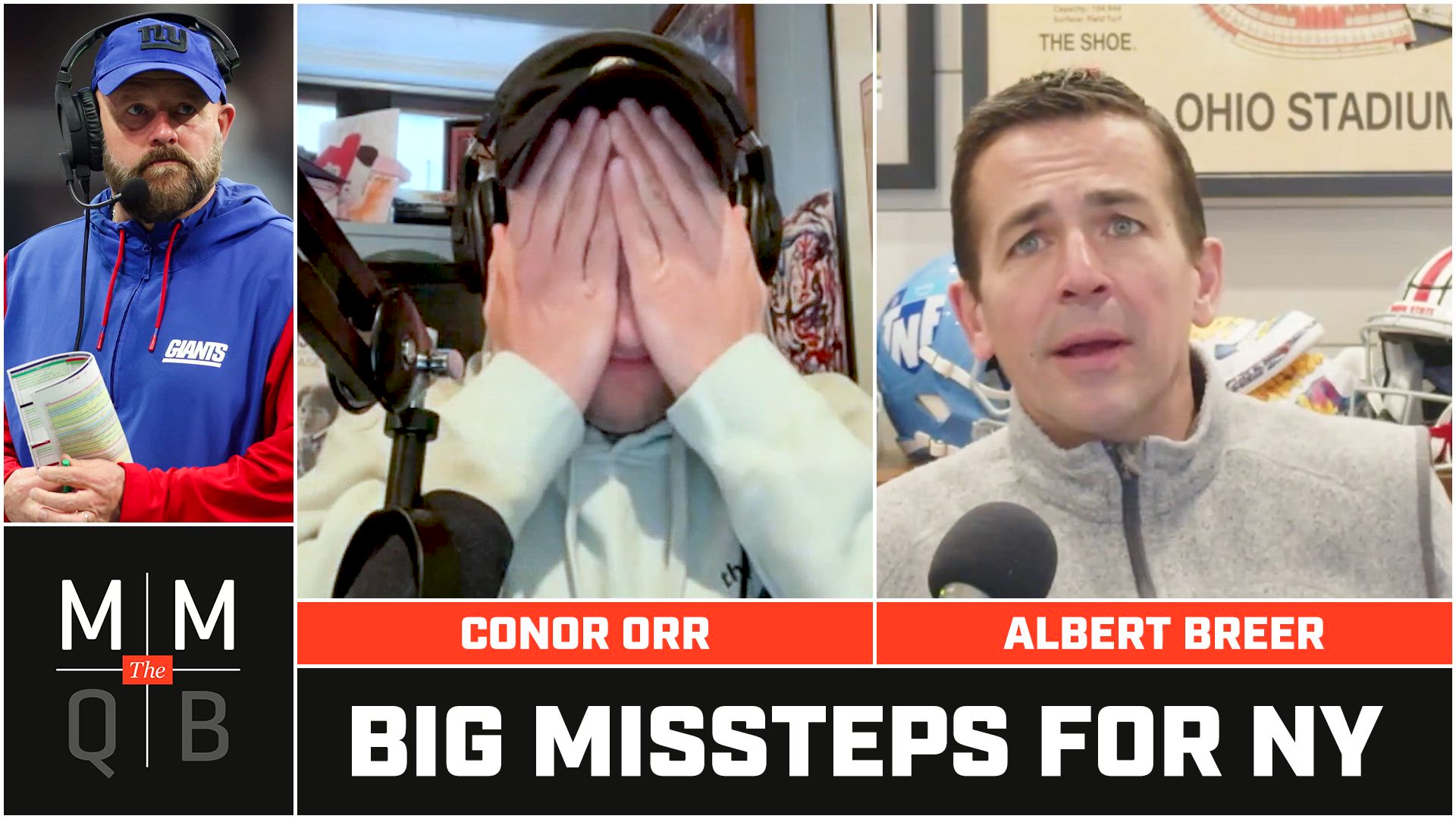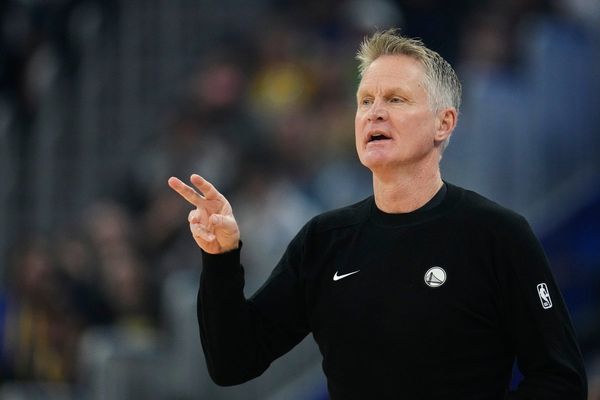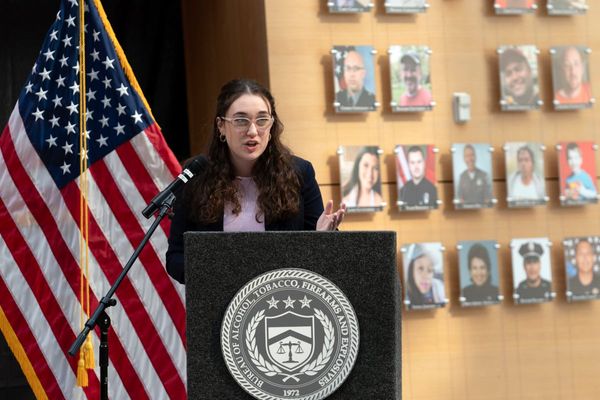

Looking out at the lush front lawn of the opulent Breakers Hotel, Buffalo Bills GM Brandon Beane racked his brain, looking for the moment when he knew.
But there wasn’t a stop Terrel Bernard made, a ball Christian Benford batted away, a catch Khalil Shakir made, a run James Cook ripped off or a quarterback Greg Rousseau hunted down that symbolized what happened in Western New York last year. It was more the steady burn of the whole thing—how the fire was lit, and stayed lit, the entire year.
And, as Beane thought through it, maybe the moment for him, when he knew the Bills’ gambles were paying off, wasn’t on the field at all. Maybe, as he figured it, it came in the lunch room at training camp, at St. John Fisher, the franchise’s remote site in Rochester, N.Y., where every year the team gets away for a month to bring the players and coaches together, a little over an hour west of their Orchard Park home.
It was there that he heard those young guys truly start to take ownership of the plan, which was to detach from a bunch of big contracts at once and lean on a raft of rising young vets to make up for the $75 million dead-money hole on the roster.
“There’s a lot of time sitting around like this between practices,” says Beane. “Just what I felt was a group that enjoyed the, Hey, people don’t believe in us. They think we missed our opportunity—including Josh Allen. And like, Oh, you can’t win without … you know, some of the players that we moved on from. And I think that was kind of like, We’re not gonna say anything, say what you want. And that’s probably what gave me the most confidence is, you felt an edge, a chip on this group. But they still had to go do it.”
In the end, they did.
Some five months later, the Bills were in the AFC title game.
That’s not to say that what Beane, his staff and Sean McDermott and his coaches pulled off was some perfect science. It would have been much tougher to pull off, of course, without Allen at quarterback. But it’s also part of a trend we’re seeing in salary cap management across the NFL. The Los Angeles Rams did this in 2023—and made the playoffs, like the Bills did, with around $75 million in dead cap on their books. The San Francisco 49ers will try to pull off a similar trick (they’re already at $85 million dead cap) this fall.
Buffalo might be the best encapsulation of it because they haven’t really had the step-back season through the process (the Rams and Niners both stumbled significantly ahead of a purge) of going into so-called cap jail. Part of it is the determination Beane saw in that mess hall at St. John Fisher. Another is the team-building process that put all those guys in that room in the first place.
We’re at the league’s annual meeting, which, more or less, squeezes right between a March full of free agency and trades, and April’s draft. In this week’s MMQB, we’re covering both, so over in the takeaways, you’ll find …
• A look at the factors that play into the 18th game discussion.
• A dive into the New York Giants’ quarterback strategy.
• More on what the weeks of Abdul Carter and Jaxson Dart tell us.
But we’re starting with a look at what the Bills just pulled off and how it’ll keep the team square in the AFC running for some time.

The Beane-McDermott Bills had done this once before.
Upon their arrival in 2017, they pushed forward with the existing core—and a cap bloated from the previous regime looking to shoot its final shot—to try to establish a culture. It worked. Those Bills broke an 18-year playoff drought behind Tyrod Taylor, Kyle Williams and a veteran offensive line. But with the corks popped came a sobering reality.
The new guys in charge still needed to clean out the aforementioned finances.
The first purge followed. When it was over, the Bills had traded up for Allen and Tremaine Edmunds in the draft, made deep cuts that led to more than $46 million dead cap (close to the same percentage of the cap they took on in 2024) and had just five draft picks left (total!) that predated McDermott’s arrival in January ’17.
Those Bills did take their medicine. They went 6–10. But there was a lot of experience for Allen and a young core to gain, and a respectable 4–3 finish.
Buffalo hasn’t really looked back since.
That step-back year allowed for the team to get aggressive thereafter in signing free agents such as Mitch Morse and Von Miller in the coming years, plus trading for Stefon Diggs, while continuing to take care of their own. A still-running streak of six consecutive playoff appearances started in 2019. A still-running streak of five consecutive AFC East titles started in ’20.
Over that time, though, debt piled up again, this time in the name of trying to take advantage of a championship window, with owner Terry Pegula green-lighting his football folks to fund an aggressive approach that took advantage of Allen’s rookie deal and keeping the brass’s collective foot on the gas.
The bottom line was that, at some point, what the team did last year was going to have to come.
Timing it right was Beane and his front office’s challenge.
“You know if you’re starting to age at certain positions,” Beane says. “Plus, you’re looking at guys that are gonna be coming up on, where you can sign and extend them, three-plus years after they were drafted. So you’re balancing that because if you don’t start making some decisions with some of these veterans or higher-price contracts, you’re gonna be forced to let more guys walk.”
Which is to say on one end, it was the Allen 1.0 era Bills that started to age out. On the other hand, there would have to be a promising young group of players coming up to replace the guys lost, both on the field and on the team’s salary cap ledger.
Of course, amassing the promising young group to facilitate the transition is much easier said than done—and, without it, it’s impossible to weather the inevitable storm of change.
In 2023, the Bills started to get the feeling they could be on the precipice of having the tools they needed to weather that storm. Foundational pieces acquired in that first offseason of ’17, such as Tre’Davious White, Micah Hyde and Jordan Poyer, and others like Morse, Miller and Diggs were getting older, having more trouble staying healthy, or both.
So that summer, while the coaches were focused on the team they’d field in the fall, Beane and his front office were trying to take an honest look at the team’s standing.
“As you start to formulate the 53 for that year, it’s, All right, who’s going into their last year?” Beane says. “Who’s gonna have one more year, but maybe it could be a sizable cap number, where you either have to convert them or maybe move on from them? You gotta make a decision. And so, you’re not locking your knees there, but you’re going, We’re gonna have X number of guys we got to make decisions on.
“And then you play the year out. How do they look? Do they look like they’re in decline? Are they staying the same? And then, do you have a young ascending player at that position?”
That’s where the second piece of the Bills’ plan came to life.
That summer, while former first-round pick Kaiir Elam struggled, the rest of his 2022 draft class kept checking boxes. Bernard (third round) looked like he could become a bedrock in the middle of the defense. Shakir (fifth round) was explosive from the slot. Benford (sixth round) was a huge piece as White struggled with injury. Cook (second round), maybe most of all, was looking like the star his brother Dalvin had been in Minnesota.
But more than just those guys having the on-field chops, McDermott had his staff watch how those guys were handling their business. Beane and his personnel folks saw it, too.
“They just showed up and worked,” Beane says. “They stayed on the field. They followed the right veterans.”
And they gave the Bills confidence that they could do what they needed to do.
Who the guys were in that draft class, and a bunch of other young players the Bills had on hand, was important—because if the Bills were going to rip off the Band-Aid and hit reset, there would be a lot of leadership walking out the door.
Diggs was traded. Morse, Poyer and White were cut. Hyde was let go in free agency. In all, six of the team’s eight captains in 2023 were gone in ’24 (though Hyde did eventually return as a member of the team’s practice squad). Not only were their voids in the starting lineup, there were also blanks to fill at the front of the room.
And there were levels to handling this. The first was making sure that those on their way out had their departures handled on a personal level because of what they meant to the franchise. The second was making sure that guys like Allen, young veterans with pelts on the wall that would bridge the gap, were fully apprised of the plan ahead of time, so they would understand that their investment in the program was appreciated.
“Josh is smart,” Beane says. “What he appreciates is honest communication: This is what we got to do. He trusts us. He knows we don’t wanna lose him either. ‘Trusting the process’ is used in our building a lot, showing that we’re not doing this callously. And he also understands that, when you say, Hey, I need you to help pat these guys on the back as our next kind of group of leaders.”
This brings you to the third piece of it—finding the right way to pass the torch.
It meant spelling out to Shakir that, with Diggs and Gabe Davis gone, it was his turn. It was asking a bit more of left tackle Dion Dawkins and Morse’s replacement, Connor McGovern, to lead the line outwardly with the team’s five-year starting center out the door. It was more or less handing leadership of the defense right over to Bernard, which was done forcefully when McDermott made him and Allen the team’s lone captains for 2024.
Losing the guys who were responsible for building the culture in the first place was never going to be easy. So, having the right type of players was imperative.
“That’s the hardest part—culture is very important to us,” Beane says. “And you want to handle these guys right, and thank them, and you also want to challenge the next group of guys that you want to be leaders, that you think have leadership qualities. [Up to that point,] they’re acquiescing to the current leaders, and they’re just playing their role. But you see things in their habits, on and off the field and now it's, Hey, part of why we did this is it’s your opportunity. And this is what you need to do.”
It’s fair to say that a year after those tough calls were made, the new leaders did it.

The completion of the transition has come over the past couple of months, with the idea of replacing the big veteran contracts going out the door, after that year of cleaning things out, with a new set of deals to reward the young guys who’ve stepped forward.
The Bills inked Shakir to a four-year, $53.1 million extension in late February, Bernard to a four-year, $50 million extension and Rousseau to a four-year, $76 million extension in early March. Then, just last week, Benford got his, doing a four-year, $76 million extension with the team. They’ve tried, to no avail thus far, with Cook.
In the middle of all that, Buffalo did right by Allen again, giving him a new deal even though he had four years left on the old one to market-correct his money after an MVP year.
Through the process of all of it, after the scouting staff drafted well, and coaches developed those draft picks, and the players stepped forward in 2024 to give the team the discounted work it needed to conquer the financial challenges the purge create, the Bills again had the room to add some guys from the outside, bringing Joey Bosa, Michael Hoecht and Larry Ogunjobi to the defensive line, and Joshua Palmer to the receiver group.
In the end, the Bills now have a window that’s once again wide open, with one of the NFL’s very best players leading the charge.
They got there by being honest with themselves on where they were and where some of their key players, both young and old, were. It meant that some guys the Bills hated to see leave going out the door. It meant others playing elevated roles. Most of all, to take Beane’s phrase, it meant trusting a process that worked for them once would work again.
And it did.
And yet, good as this all looks, Beane’s well-attuned to what’s next, and how accomplishing what the Bills did in 2024 gives them no assurances that they’ll have the same sort of shot they had at getting over the hump in ’25.
“It’s still a chemistry experiment,” he says. “You can say, Hey, we did a good job or We didn’t do a good job, however you see it. But until this team, this 2025 team, comes together, you don’t know. Do they enjoy being around each other? Do they play for one another? That will determine, once you get past the injury things and that stuff, whether this team has success.”
It’s fair to say they’ve got a good shot at it, though. And that, if a team is smart enough, “cap jail” in today’s NFL comes with a pretty decent chance of parole.
More NFL on Sports Illustrated
This article was originally published on www.si.com as Bills’ Recent Extensions Show Success of Brandon Beane’s Plan.







